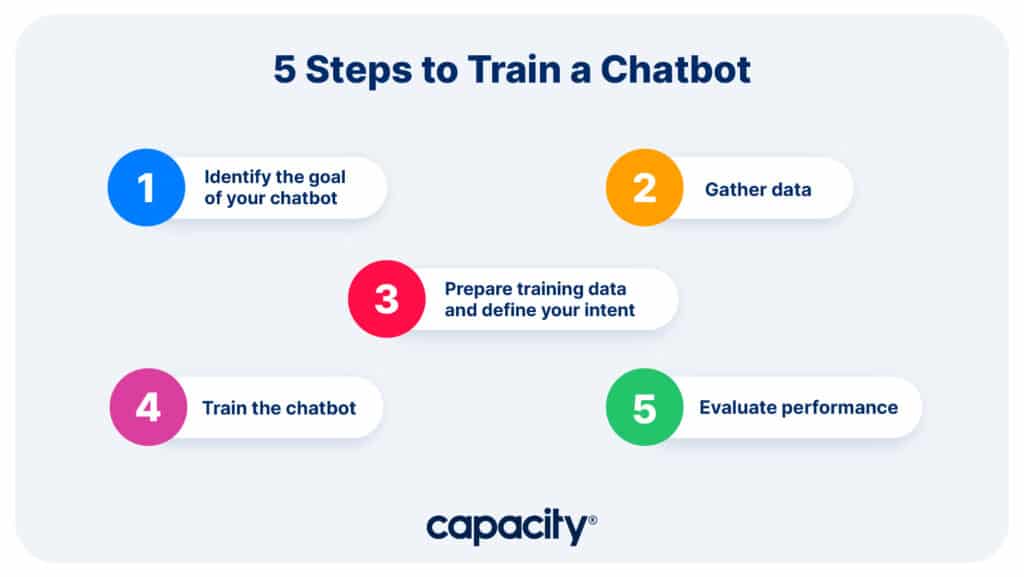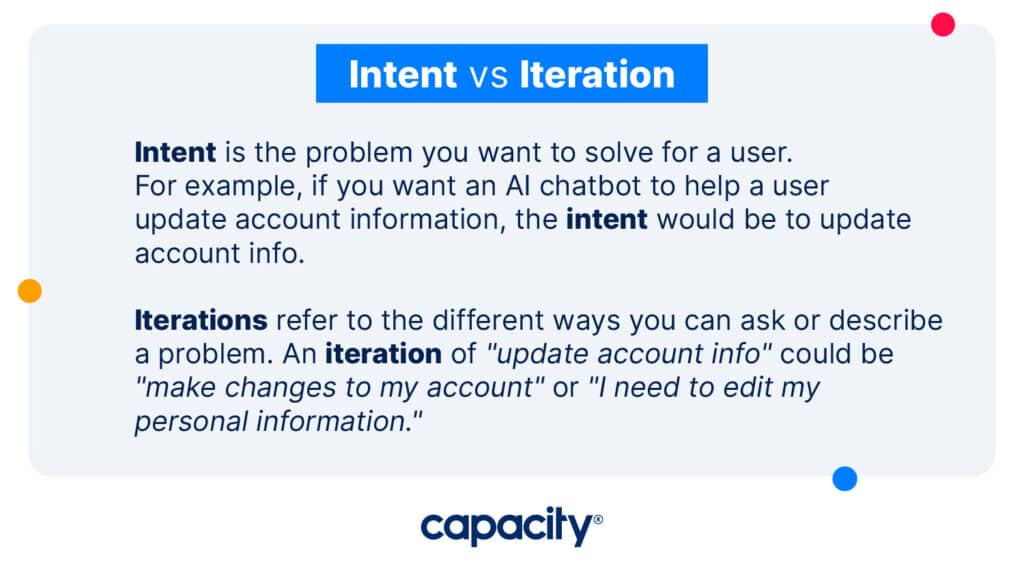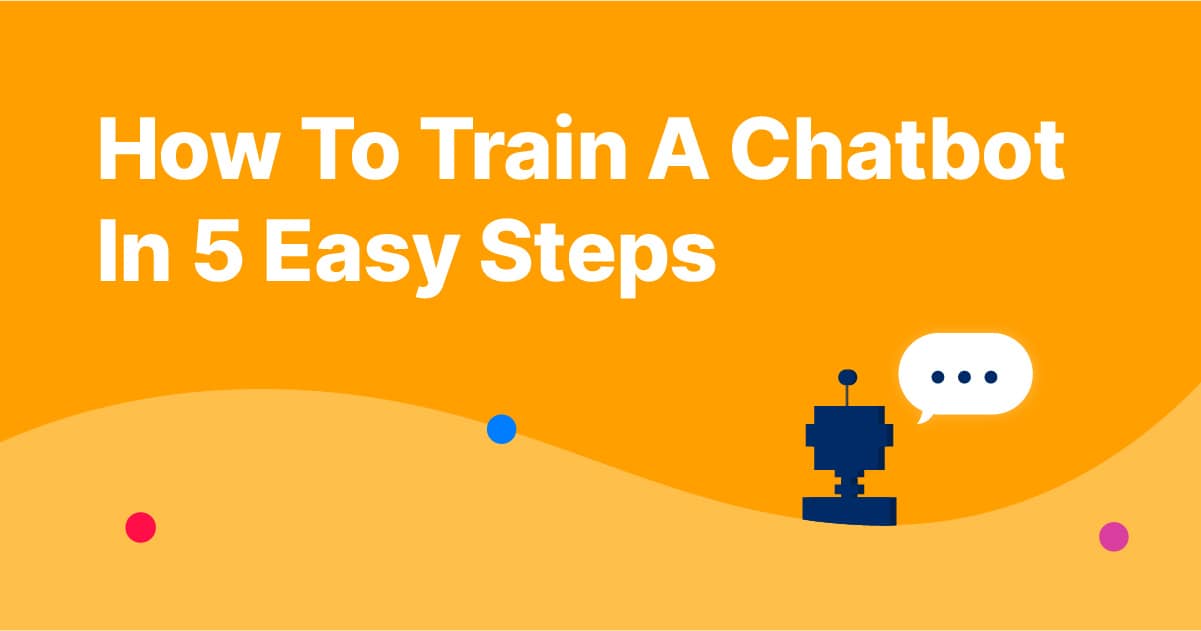Chatbots have come a long way since their early days, and now they are an integral part of how businesses interact with customers. With conversational AI, you can create a completely automated customer service experience that is efficient, helpful, and highly personalized. But how do you get started?

Training your AI chatbot doesn’t have to be complicated. Here are five easy steps to get you started on how to train a chatbot:
1. Identify the goal of your chatbot
When training a chatbot, it is essential to start by defining how you want it to interact with users and what goals you want it to accomplish. Instead of creating a wish list of what you would like your bot to do, take the time to determine precisely how your business can use this technology strategically and efficiently. Is your goal for it to be able to answer basic questions or do more complex tasks like providing product recommendations? Doing so will ensure that your investment in an AI-based solution pays off.
2. Gather data
To train an AI-powered chatbot, you’ll need to collect a large amount of data from various sources. Examples include conversations between customers and agents, FAQs, customer surveys and feedback, etc. This helps the AI model understand how people communicate with the bot by providing information about how questions are asked and how responses are provided. Collecting data helps create a more natural and conversational experience for the user and includes information that can inform how the chatbot is trained.

Get Started with AI
Capacity’s customized AI Assessments can help:
- Identify opportunities for using AI
- Prioritize use cases that fit your goals
- Build an action plan for implementation
3. Prepare training data and define your intent
Clean the data and remove any irrelevant content before you feed it into a machine-learning model. Make sure to categorize different topics, so your chatbot knows how to respond correctly in various conversations.
Ensure your AI chatbot is as user-friendly and accurate as possible by considering how people interact and ask questions. To guarantee success, include various expressions when developing and testing each intent for your bot. To ensure success, you should create several iterations of each intent.
Let’s define a few keywords:
Intent: The problem you want to solve for a user. Here’s an example – If you want an AI chatbot to help a user update account information, the intent would be to update account info.
Iterations: Iterations refer to the different ways you can ask or describe a problem. Here’s an example – If we use the intent of “update account info” from the previous example, some different iterations of this could be “Make changes to my account” or “I need to edit my personal information.”

You should continue to update and tweak different intents and iterations to ensure you have all potential wording covered.
4. Train the chatbot
Use a machine learning algorithm like supervised learning and natural language processing (NLP) to train the AI chatbot how to interact with users. This helps it understand how to respond to customer queries or requests.
Leverage the power of your chatbot to forge a connection with customers in an authentic way that reflects your brand. Finding the right voice and personality for your AI-powered bot is key. At the same time, you may typically take a professional stance, but you can still construct a chatbot that keeps your customers, prospects, and partners engaged. With conversational AI, users can talk to a chatbot just as easily as a human agent.
5. Evaluate performance
Monitor how well the chatbot is performing and adjust as necessary. You can use metrics such as accuracy, customer satisfaction, and response time to measure how successful your conversational AI training has been.
After your chatbot has been released, don’t assume the job is completed. It’s essential to continue refining it for long-term success. Examining how people connect with your AI chatbot will give you vital insights into your chatbot training process and strategy gaps. You will see what users ask and the data they seek. It’s important to remember that this is all a part of continuous improvement. Keep an open mind and take things daily while your organization is learning how to train a chatbot.
Following these five steps, you can efficiently train a chatbot powered by artificial intelligence that provides helpful and personalized customer service experiences.
Train your chatbot with Capacity
Capacity is the leader in conversational AI, giving businesses the tools they need to create powerful chatbots quickly and easily. With pre-built integrations and templates tailored to fit any industry, Capacity’s AI platform allows users of all skill levels to build engaging customer experiences. Capacity’s AI platform provides extensive options for customizing your chatbot according to your organization’s needs.

Get Started with AI
Capacity’s customized AI Assessments can help:
- Identify opportunities for using AI
- Prioritize use cases that fit your goals
- Build an action plan for implementation





